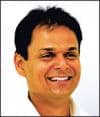by Rhonda DeLong
How one practice used block scheduling to turn chaos into calm

Rhonda DeLong
Three doctors plus five locations plus 45 staff members plus 4,000 active patients equals the potential for a scheduling nightmare. We had a near nightmare on our hands as our scheduling templates had no structure except for the number of chairs and exam appointments. As long as our scheduling coordinator could find the necessary number of units for an appointment, she could schedule a procedure anywhere she wanted, even if that meant using multiple chairs. It was also possible to have two laser procedures scheduled side-by-side at the same time that the orthodontist was supposed to be in the new patient exam. Our doctors finally had enough of this chaos and made the decision that the scheduling protocol had to change.
We were referred to Sue Hanen of impact360 for her scheduling expertise. We decided that we were no longer going to create our daily schedules haphazardly. We were going to create a block schedule unique to each of our locations, doctors, and days of the week. This was a huge project that took approximately a year to complete and was not something we could have tackled successfully without Sue’s leadership.
Breaking the Codes
The complex process of rebuilding our scheduling system started by taking an in-depth look at all of the procedures we perform in our offices. We had been using Kodak OrthoTrac as our practice-management software for about 3 years. When it was set up, we tried to minimize our procedure codes, thinking that it would make our life easier. It may have made life easier, but it didn’t provide us with the level of detail that we needed to properly establish a block schedule. So our first step was to create a more specific list of procedure codes and to track completed appointments by procedure codes.
The list of procedure codes was an ever-changing document for at least 3 months. Each of our clinic techs made suggestions for additions and modifications until the entire team was satisfied that it was all-encompassing but not unmanageable. Our final list included approximately 100 different procedures.
Sequestering the Experts
With our procedure list complete, we were ready to have Sue return to our office and guide us through an arduous week of creating schedules. One of the most important steps in this process was to develop a team of “experts” who could devote several days to working with Sue. We included a variety of employees who were detail-oriented and creative thinkers on our team of five. Smaller practices may not need to include that many employees in this process.

Our orthodontists were committed to getting the chaos under control, so we actually reduced our patient schedule during that time so that our team of experts could be dedicated to this project. Of course, we scheduled the heart of this project during our slowest time of the year in order to minimize lost appointments. The team was “sequestered” in a room with Sue and focused solely on the schedule for 2 straight days.
Our team of experts made a final review of all of the procedures, appropriately named them, and sorted them into categories. These categories included the typical types of appointments scheduled in every orthodontic office: exams, bands/bonds, adjustments, checks, and emergencies. Once all of the individual procedures were identified, the team began the long process of determining how much chairtime and doctor time was needed for each procedure. This step included some negotiations, since faster techs lobbied for shorter chairtimes and it is important to arrive at standards that can be met by the majority of your team.
Each of the 100 procedures was categorized into 33 different appointment types, ranging in length from 10 minutes to 2 hours. All procedure codes within an appointment type followed the same time structure. For example, appointments to take impressions for a retainer or an appointment to change an archwire were both scheduled for 20 minutes, which includes several minutes at the end for the doctor to check the patient.
Your block schedule is only as good as the accuracy of the times you assign to each appointment type. This was the most crucial and time-consuming step in our process. We were very specific with our appointment types and, learning from experience, we created unique templates for our satellite offices. We knew that it took an extra 10 minutes in our satellite offices to take photos and x-rays, save them to the main server, and then print them. So we created different exam templates for those offices.
Building the Schedule
Once all of the appointment types were finalized, our staff completed their assignment and it was time for Sue to take over and build the schedules. Sue completed an analysis of our appointment history and determined the quantity of each appointment type that was needed for each location on a monthly basis. She then created different scheduling templates to meet our needs based on office hours, lunch schedules, and the appointment types needed.
OrthoTrac allows you to enter appointment templates that specify the total chairtime for the appointment type and the placement of the doctor time within the appointment. Then, as you build your daily schedule standards, it tracks the doctor time used for each appointment type and does not allow you to overutilize the doctor within each time unit.
Our goal was to reserve the early morning, lunchtime, and after-school hours for short appointments, so that we could make the majority of our appointments convenient for patients and parents. The longer appointments (such as bondings and debands) were typically scheduled between 9 am and 3 pm.
Our doctors also perform specialty procedures, including the placement of temporary anchorage devices, a unique magnetic lingual retainer, and laser surgeries, which all require anywhere from 10 to 20 minutes of doctor time throughout the appointment. Prior to using the block schedule with designated doctor time, those procedures could create a huge bottleneck in the clinic. OrthoTrac only allows us to schedule those appointments where they fit properly.
After a full week of hard work, we were eager to start reaping the rewards of our new and improved schedule. Considering that some of our appointments are scheduled several months in advance, we had to review our future appointments and select an implementation date that would minimize the changes and inconvenience for our patients. We were able to implement the full schedule in 3 months. During the time that we were waiting, our staff became more aware of the concept of doctor time and started scheduling more smartly even before the time limitations were in place. The waiting time also allowed our clinic techs to start working on a “chair” basis versus a first-come, first-served basis prior to full implementation.
Working Out the Bugs
I would love to say that everything went perfectly for the first week, but that wasn’t so. As with any change, there were bugs to work out, both in the clinic and at the front desk. Within 2 weeks, our doctors were definitely noticing a decrease in the chaos and their resulting stress level. We were able to go from 9 patient days a week to 8, which allowed the doctors and staff to have 3-day weekends.
Sue remained in regular contact throughout the implementation and assisted with changes that needed to be made immediately. She returned to our office after 8 weeks and met with the orthodontists and staff to obtain their feedback. We reassembled the team of “experts,” and they worked with Sue to make a few minor changes to some of the appointment templates. Sue then rebuilt all of our standard schedules to include the amended appointment types.
For more information about the companies mentioned here, visit our online Buyer’s Guide.
We are now over a year and a half into using a block schedule, and we recognize the importance and value of it. We average 75 patients a day on a consistent basis with a fluctuation of +/-5. In the past, it was possible to see 100 patients one day and 50 the next—and no one was happy at the end of either of those days. We still have those occasional days where no schedule or practice-management software could prevent the havoc.
If you’re even remotely considering making a change in your scheduling protocol, do it now. The sooner you start the process, the sooner you will experience the advantages. It may sound like a daunting project, but not everyone has the large number of doctors, staff members, and locations that we do. Most importantly, don’t hesitate to use consultants with scheduling expertise, and make sure you are making full use of your practice-management software.
Rhonda DeLong is a former CPA with more than 10 years’ experience in practice management. For the last 5 years she has been the office manager for Orthodontic Specialty Services, the practice of Gene Dellinger, DDS, MSD; Eric Dellinger, DDS, MSD; and Aron Dellinger, DDS, MSD; with offices in Fort Wayne, Angola, Kendallville, and Warsaw, Ind. She can be reached at










